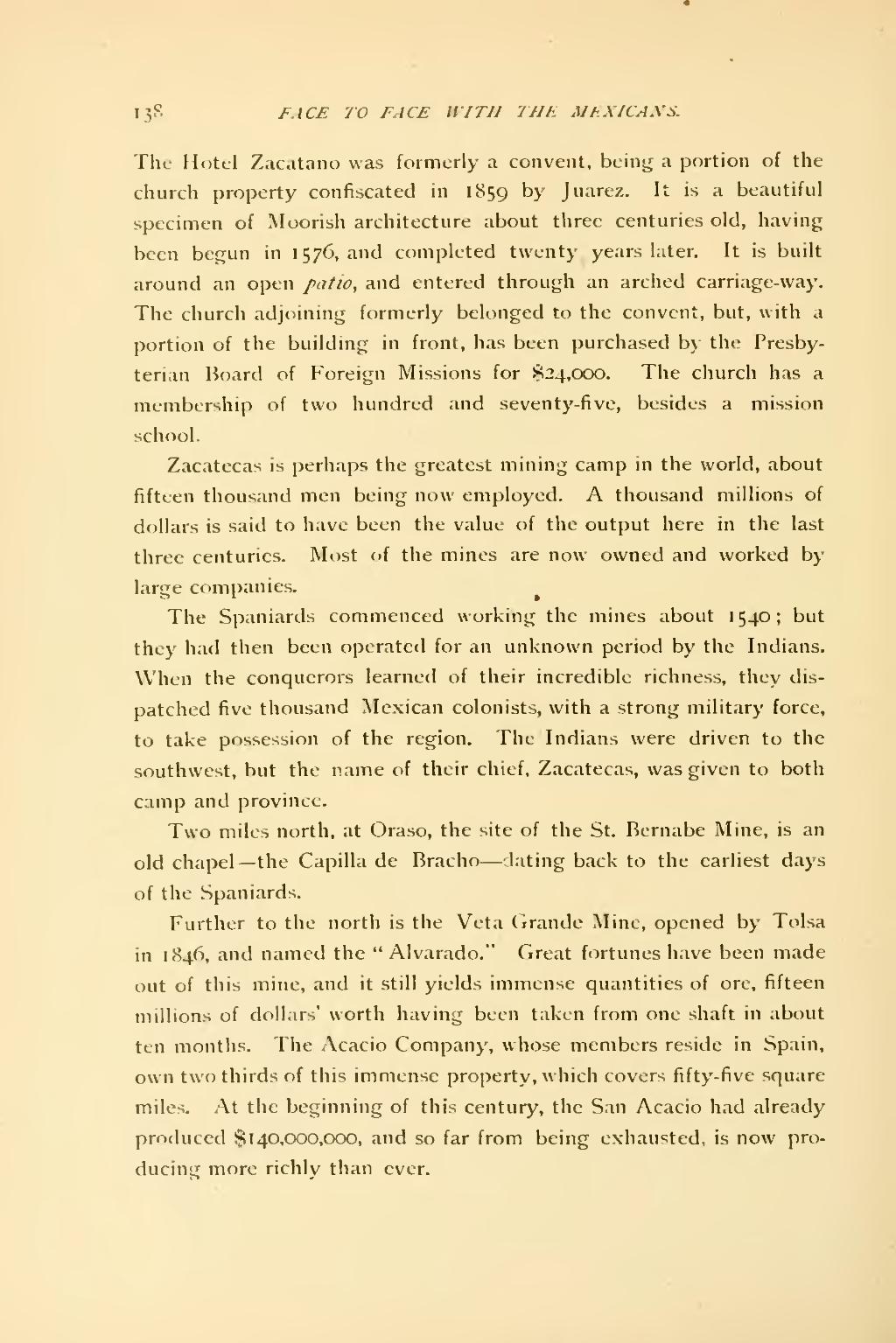The Hotel Zacatano was formerly a convent, being a portion of the church property confiscated in 1859 by Juarez. It is a beautiful specimen of Moorish architecture about three centuries old, having been begun in 1576, and completed twenty years later. It is built around an open patio, and entered through an arched carriage-way. The church adjoining formerly belonged to the convent, but, with a portion of the building in front, has been purchased by the Presbyterian Board of Foreign Missions for $24,000. The church has a membership of two hundred and seventy-five, besides a mission school.
Zacatecas is perhaps the greatest mining camp in the world, about fifteen thousand men being now employed. A thousand millions of dollars is said to have been the value of the output here in the last three centuries. Most of the mines are now owned and worked by large companies.
The Spaniards commenced working the mines about 1540; but they had then been operated for an unknown period by the Indians. When the conquerors learned of their incredible richness, they dispatched five thousand Mexican colonists, with a strong military force, to take possession of the region. The Indians were driven to the southwest, but the name of their chief, Zacatecas, was given to both camp and province.
Two miles north, at Oraso, the site of the St. Bernabe Mine, is an old chapel—the Capilla de Bracho—dating back to the earliest days of the Spaniards.
Further to the north is the Veta Grande Mine, opened by Tolsa in 1846, and named the "Alvarado." Great fortunes have been made out of this mine, and it still yields immense quantities of ore, fifteen millions of dollars' worth having been taken from one shaft in about ten months. The Acacio Company, whose members reside in Spain, own two thirds of this immense property, which covers fifty-five square miles. At the beginning of this century, the San Acacio had already produced $140,000,000, and so far from being exhausted, is now producing more richly than ever.
